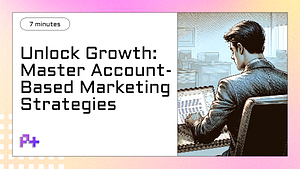What is a Lead Magnet?
A lead magnet is a marketing tool designed to attract potential customers by offering them something of value in exchange for their contact information, typically an email address. This could be in the form of an eBook, a whitepaper, a checklist, a webinar, or even a free trial. The primary goal of a lead magnet is to generate leads—individuals who have expressed interest in a product or service—by providing them with valuable content that addresses their needs or pain points. By using a lead magnet, businesses can create a targeted list of prospects who are more likely to convert into paying customers.
When crafting an effective lead magnet, it’s essential to consider the audiences preferences and interests. The content should be relevant and offer immediate benefits to entice users to provide their contact details. For example, a digital marketing agency might offer a free guide on 10 Essential SEO Tips as a lead magnet to attract small business owners looking to improve their online presence. The key is to ensure that the lead magnet is not only high-quality but also aligns with the overall marketing strategy, helping to nurture leads through the sales funnel with follow-up emails and additional resources.
In addition to their role in lead generation, lead magnets can significantly enhance brand awareness and credibility. By providing valuable information, businesses position themselves as experts in their field, fostering trust among potential customers. Moreover, a well-designed lead magnet can encourage sharing, as satisfied users are likely to recommend it to others, expanding the reach of the brand. In todays competitive marketplace, leveraging lead magnets effectively can be a game-changer, allowing businesses to build a robust email list, engage with their audience, and ultimately drive more conversions.
Why Businesses Should Create Lead Magnets
In todays competitive digital landscape, businesses are constantly seeking effective strategies to attract potential customers and convert them into loyal clients. One of the most impactful strategies is the creation of a lead magnet. A lead magnet is a valuable resource offered for free in exchange for a visitors contact information, such as an email address. This approach not only helps in building a targeted email list but also establishes trust and authority within a specific niche. By providing something of value, businesses can engage potential leads more effectively, making it easier to nurture these relationships into sales over time.
Creating a lead magnet serves multiple purposes for businesses. First and foremost, it helps in generating high-quality leads. Unlike generic advertising, lead magnets appeal directly to the interests and needs of the target audience. Whether it’s an informative eBook, a data-rich whitepaper, or a compelling video series, the right lead magnet can significantly increase conversion rates by addressing specific pain points or desires of potential customers. Furthermore, lead magnets can enhance brand visibility and recognition; as users share valuable resources with their networks, businesses gain exposure to new audiences, creating a ripple effect that amplifies their outreach.
Moreover, lead magnets play a crucial role in the overall marketing funnel. Once a lead has been captured, businesses can implement effective follow-up strategies through email marketing campaigns. This not only facilitates ongoing communication but also allows for personalized content that nurtures the lead further along the buying journey. By strategically utilizing a lead magnet, businesses can foster relationships, educate their audience, and ultimately drive conversions. In an era where customer loyalty is paramount, investing time and resources into creating high-quality lead magnets can provide a significant competitive advantage and contribute to long-term business success.
Types of Lead Magnets and Examples
Lead magnets are powerful tools used by marketers to attract potential customers by offering them something of value in exchange for their contact information. There are several types of lead magnets, each designed to cater to different audience needs and preferences. Understanding these types can help businesses effectively engage their target market and increase conversion rates.
One popular type of lead magnet is the eBook or whitepaper. These in-depth resources provide valuable information on a specific topic relevant to your audience. For instance, a digital marketing agency might offer an eBook titled 10 Proven Strategies for Boosting Your Online Presence. This not only positions the agency as an authority in its field but also captures the interest of potential clients who are seeking to improve their digital marketing efforts. Other options in this category include industry reports and case studies, which can further establish credibility while providing insights that are beneficial for the reader.
Another effective lead magnet is the free trial or demo. This type allows potential customers to experience a product or service without any financial commitment, thereby reducing the barrier to entry. For example, software companies often offer free trials to let users explore the full functionality of their applications. This approach not only attracts leads but also allows businesses to showcase the value of their offerings, ultimately leading to higher conversion rates. Additionally, quizzes and assessments can serve as engaging lead magnets, providing personalized results that resonate with users and encourage them to share their contact information for more tailored insights. By utilizing a mix of these lead magnets, businesses can effectively capture leads and nurture them through the sales funnel.
How to Create an Effective Lead Magnet
Creating an effective lead magnet is essential for businesses looking to grow their email lists and convert potential customers into loyal clients. A lead magnet is a valuable resource offered to potential customers in exchange for their contact information, such as an email address. To craft a compelling lead magnet, start by identifying your target audience and understanding their pain points. Conduct market research to uncover the specific challenges they face, and tailor your lead magnet to address these needs. This could be in the form of ebooks, checklists, templates, or webinars—resources that provide immediate value and actionable insights.
Once you have a clear understanding of your audiences needs, the next step is to ensure your lead magnet delivers high-quality content. Focus on creating a resource that is not only informative but also visually appealing and easy to digest. Use clear headings, bullet points, and engaging graphics to enhance the user experience. Additionally, consider the format of your lead magnet carefully; for instance, if your audience prefers quick, actionable content, a checklist or cheat sheet might be more effective than a lengthy ebook. Remember, the goal is to provide something that prospects find irresistible, encouraging them to willingly share their information.
Finally, promote your lead magnet effectively to maximize its reach. Utilize various channels such as social media, email marketing, and your website to showcase the benefits of your lead magnet. Create dedicated landing pages that highlight the value of your resource and include compelling calls to action. You can also leverage SEO techniques by incorporating keywords related to your lead magnet, ensuring it ranks well in search engines and attracts organic traffic. By following these steps, you can create an effective lead magnet that not only captures leads but also sets the stage for successful long-term customer relationships.
Tips for Distributing Your Lead Magnet and Converting Leads into Customers
Distributing your lead magnet effectively is crucial for maximizing its potential to convert leads into customers. One of the most effective methods is to leverage your existing digital platforms. Start by promoting your lead magnet on your website, particularly through strategic placements such as pop-ups, landing pages, and blog posts related to the topic of your lead magnet. Additionally, consider using social media channels to share engaging content that highlights the value of your lead magnet. Create eye-catching graphics or short videos that summarize what users will gain by downloading it. This multi-channel approach not only broadens your reach but also captures the attention of diverse audience segments, enhancing the likelihood of conversions.
Email marketing is another powerful tool for distributing your lead magnet. If you already have an email list, segment your audience to send personalized messages that resonate with their specific interests and pain points. Craft compelling subject lines and concise yet persuasive copy that emphasizes the benefits of your lead magnet. For those who haven’t yet subscribed, consider using a teaser campaign to pique interest, guiding them to your sign-up form. Follow up with a series of emails providing further value and insights related to the lead magnet, gradually nurturing these leads and establishing trust, which is essential for converting them into paying customers.
Lastly, consider partnerships and collaborations that can help you reach new audiences. Collaborating with influencers or businesses that share a similar target market can amplify your lead magnet’s visibility. You can host webinars, co-create content, or offer exclusive bonuses to their audience in exchange for access to your lead magnet. This not only expands your reach but also builds credibility through association. Continuously analyze the performance of your lead magnet distribution strategies using analytics tools to identify what works best. By refining your approach based on data, you can enhance your lead conversion rates, ensuring that your lead magnet not only attracts potential customers but also effectively turns them into loyal clients.



